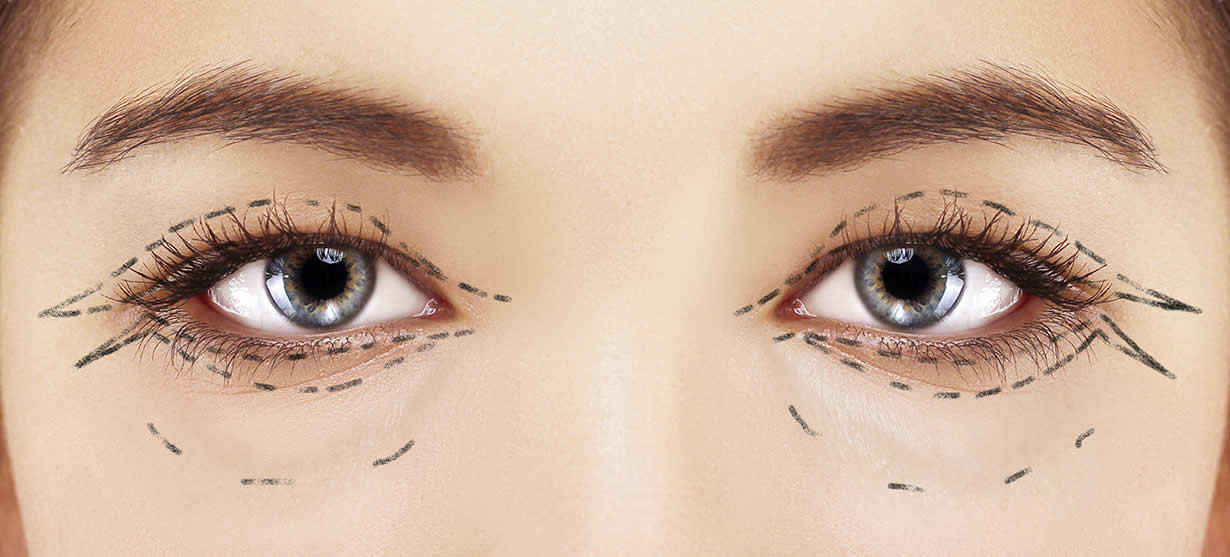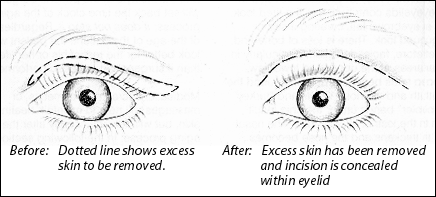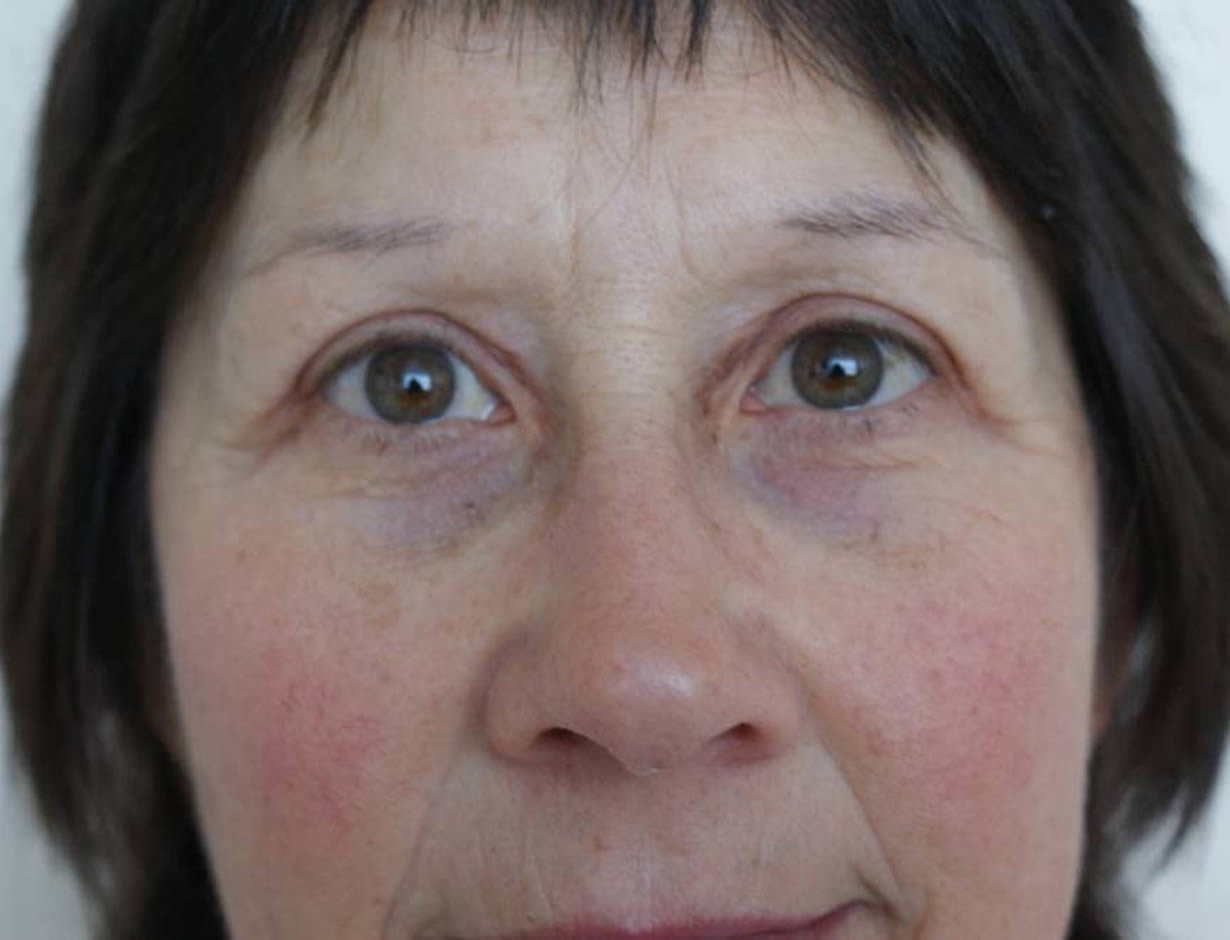Blepharoplasty

What is blepharoplasty?
Blepharoplasty is an operation performed by Dr Hussain which removes the excess droopy skin from the upper eyelids.
What are the causes of excess upper lid skin?
Excess droopy skin of the eyelids (dermatochalasis) is often due to ageing and sun damage. Although the eyelid appearance may be typical for your family, it can often portray an aged and tired look. Individuals with excess upper eyelid skin may often complain of heaviness and tiredness of their eyes especially towards the end of the day.
Before the blepharoplasty operation
Dr Hussain will have spent time undertaking a detailed pre-operative consultation before the surgery. During this visit, Dr Hussain will explain in detail the procedure itself and answer any questions you may have. In particular you will be asked about any history of eye problems such as glaucoma and thyroid disease. You will also be asked about any medication you take, both prescribed and over the counter. If this changes before the operation, it is imperative that you contact Dr Hussain to inform him.
What does the actual blepharoplasty operation involve?
Removal of excess upper eyelid skin is carried out as day case procedure under local anaesthesia. That means you will return home on the same day after the surgery.
Dr Hussain will use a pen to very carefully mark out the skin to be removed – this amount may vary between each eye. Usually this is in a crescent shape which extends into the laughter lines at the corner of your eyes The final scar is well-hidden in the natural skin crease behind the eye.

Anaesthetic is then injected by Dr Hussain under the eyelid skin, which stings initially but settles very quickly within seconds. After this the eyelids will be numb and the surgery will not hurt. It is entirely normal to feel a sensation of something ‘going on’ around the eyes, as your skin will be numb but you will be awake.
Dr Hussain will then remove the excess skin. Not uncommonly, according to what will give you the best result, a small strip of the eyelid muscle and the fat pads underneath may also be removed. The skin wounds are then closed with dissolvable sutures.
What happens after a blepharoplasty?
At the end of the surgery, ointment is put on the wounds and cooling ice eye pads applied. You will then rest in the hospital for at least an hour after the surgery. Dr Hussain will then come and review your progress and once he is happy, he will allow you to go home. You should not drive yourself home after the operation.
What happens when you get home after a blepharoplasty?
After the procedure, to ensure you get the best outcome it is important that you rest. You must sleep with 3 to 4 pillows for a few days and at the very least for 72 hours. Continuing with ice packs will help reduce the swelling which is normal with this type of operation. It is also common for patients not to be able to fully close their eyes after the procedure. This settles very quickly and is nothing to be concerned about. It is also normal for the eyelids to appear swollen and bruised for some time after this operation and there may be a little bleeding from the eyelids for the first day.
Dr Hussain will prescribe you some eye ointment which should be used 3 to 4 times daily to ensure the suture line is kept moist. If your eye feels sore when the anaesthetic wears off, take simple painkillers like paracetamol. Avoid aspirin and medications such as ibuprofen in the first 24 hours as these can increase your risk of bleeding. Normally, any discomfort will settle within a day or two.
Eyelid makeup can be worn from about two weeks after the surgery. You may read or watch television within a few days. Most people can return to wearing contact lenses after two weeks although they may feel somewhat uncomfortable for a while after surgery.
What problems can occur after a blepharoplasty?
Bruising and swelling of the eyelids is common. The surface of the eyeball may also swell. These changes will settle after a few weeks. Dry, gritty eyes for a few weeks can be helped with lubricant eye drops and ointment. Your vision may be slightly blurred for a few days.
Sometimes some loose skin persists, often at the outer end of the eyelid and further surgery may be required. Rarely post-operative infection may develop in the lids when they would become tender, red and swollen and the wound may breakdown.
Extremely rarely, severe bleeding around or behind the eye can cause loss of vision. If you have severe pain or excessive lid swelling or any concerns whatsoever after your procedure please ring Rachel Bell, Dr Hussain’s Secretary rachel.bell@nuffieldhealth.com / 0113 388 2234
Results
Before

Note how the excess upper eyelid skin creates a hooded look, portraying a tired, droopy & aged look.
After

Following upper eyelid blepharoplasty, creating a more youthful, wide-eyed & cosmetically pleasing appearance.
Click here to view our Blepharoplasty Before & After gallery.
If you have any questions or comments, or if you want to learn more about the services of Dr Walayat Hussain, please call 0113 388 2234 or submit an online form by clicking here.

